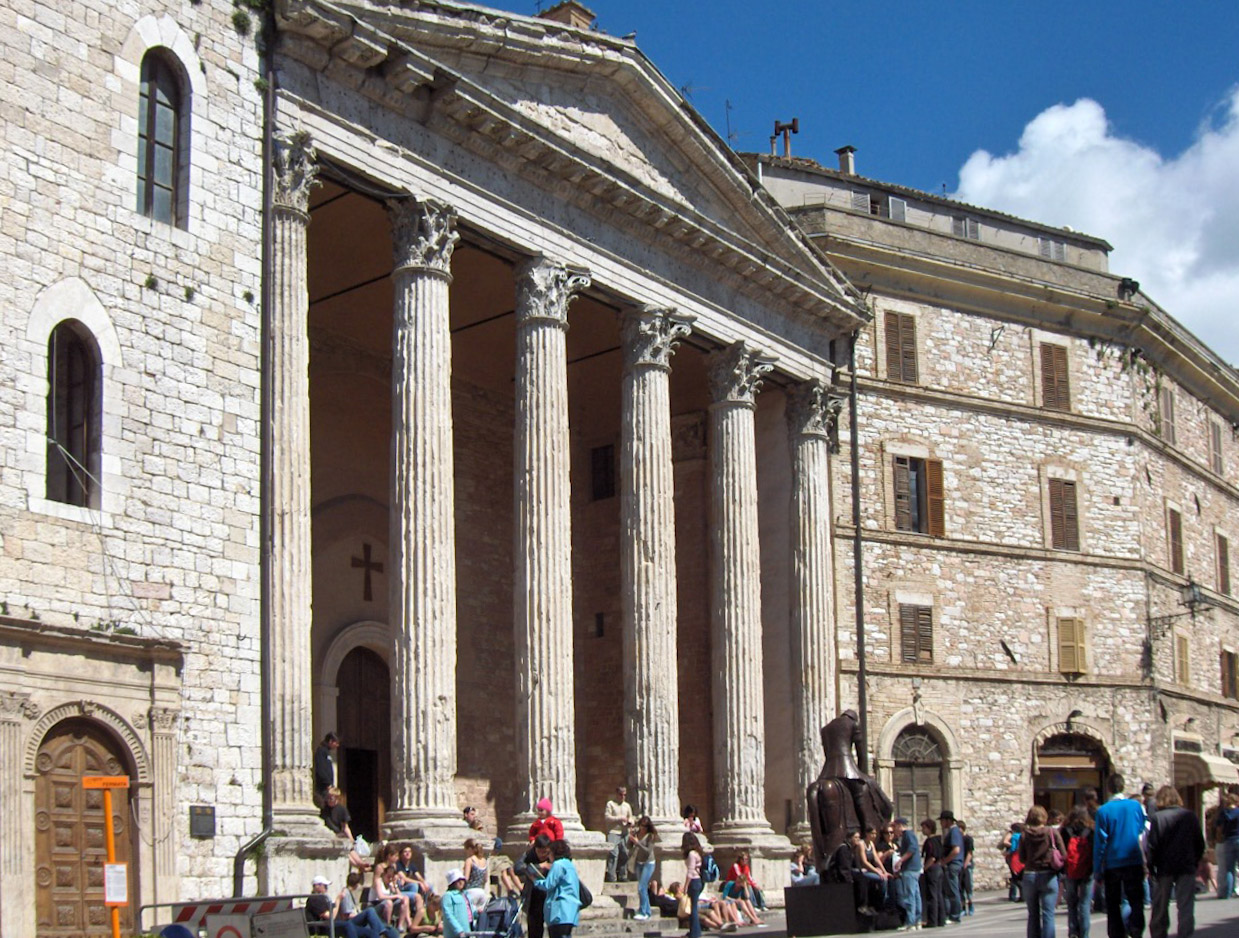Santa Maria sopra Minerva (Assisi) on:
[Wikipedia]
[Google]
[Amazon]
 The Temple of Minerva ( it, Tempio di Minerva, links=no) is an ancient Roman building in Assisi,
The Temple of Minerva ( it, Tempio di Minerva, links=no) is an ancient Roman building in Assisi,
Page at Travelitalia website
{{Authority control Maria Minerva 1st-century BC religious buildings and structures Temples in Italy Temples of Minerva
 The Temple of Minerva ( it, Tempio di Minerva, links=no) is an ancient Roman building in Assisi,
The Temple of Minerva ( it, Tempio di Minerva, links=no) is an ancient Roman building in Assisi, Umbria
it, Umbro (man) it, Umbra (woman)
, population_note =
, population_blank1_title =
, population_blank1 =
, demographics_type1 =
, demographics1_footnotes =
, demographics1_title1 =
, demographics1_info1 =
, ...
, central Italy
Italy ( it, Italia ), officially the Italian Republic, ) or the Republic of Italy, is a country in Southern Europe. It is located in the middle of the Mediterranean Sea, and its territory largely coincides with the homonymous geographical ...
. It currently houses a church, , built in 1539 and renovated in Baroque style
The Baroque (, ; ) is a style of architecture, music, dance, painting, sculpture, poetry, and other arts that flourished in Europe from the early 17th century until the 1750s. In the territories of the Spanish and Portuguese empires including t ...
in the 17th century.
The temple was built in the 1st century BC by will of Gnaeus Caesius and Titus Caesius Priscus, who were two of the city's ''quattuorviri
The duumviri (Latin for "two men"), originally duoviri and also known in English as the duumvirs, were any of various joint magistrates of ancient Rome. Such pairs of magistrates were appointed at various periods of Roman history both in Rome its ...
'' and also financed the construction. The attribution to the goddess Minerva
Minerva (; ett, Menrva) is the Roman goddess of wisdom, justice, law, victory, and the sponsor of arts, trade, and strategy. Minerva is not a patron of violence such as Mars, but of strategic war. From the second century BC onward, the Rom ...
derives from the finding of a female statue, although a dedication stone to Hercules
Hercules (, ) is the Roman equivalent of the Greek divine hero Heracles, son of Jupiter and the mortal Alcmena. In classical mythology, Hercules is famous for his strength and for his numerous far-ranging adventures.
The Romans adapted the ...
has been found, and the temple was likely dedicated to this male demi-god. In the Middle Ages the temple housed a tribunal with an annexed jail, as testified by one of Giotto
Giotto di Bondone (; – January 8, 1337), known mononymously as Giotto ( , ) and Latinised as Giottus, was an Italian painter and architect from Florence during the Late Middle Ages. He worked during the Gothic/ Proto-Renaissance period. G ...
's frescoes in the St. Francis Basilica, which portrays the church windows with bars.
Of the ancient temple, the façade has been preserved, with six Corinthian Corinthian or Corinthians may refer to:
*Several Pauline epistles, books of the New Testament of the Bible:
**First Epistle to the Corinthians
**Second Epistle to the Corinthians
**Third Epistle to the Corinthians (Orthodox)
*A demonym relating to ...
columns supporting the architrave and a small pediment
Pediments are gables, usually of a triangular shape.
Pediments are placed above the horizontal structure of the lintel, or entablature, if supported by columns. Pediments can contain an overdoor and are usually topped by hood moulds.
A pedim ...
. The columns were originally covered by a very strong plaster, which was perhaps colored. The cella was completely demolished during the church's construction, in the 16th century, while a small section of the temple was found in the 20th century near the altar.
The temple was visited and described by the German poet Goethe
Johann Wolfgang von Goethe (28 August 1749 – 22 March 1832) was a German poet, playwright, novelist, scientist, statesman, theatre director, and critic. His works include plays, poetry, literature, and aesthetic criticism, as well as tr ...
during his travels in Italy, as the first ancient structure in good condition seen during his life (1786).
See also
*List of Ancient Roman temples
This is a list of ancient Roman temples, built during antiquity by the people of ancient Rome or peoples belonging to the Roman Empire. Roman temples were dedicated to divinities from the Roman pantheon.
Substantial remains
Most of the b ...
References
External links
Page at Travelitalia website
{{Authority control Maria Minerva 1st-century BC religious buildings and structures Temples in Italy Temples of Minerva